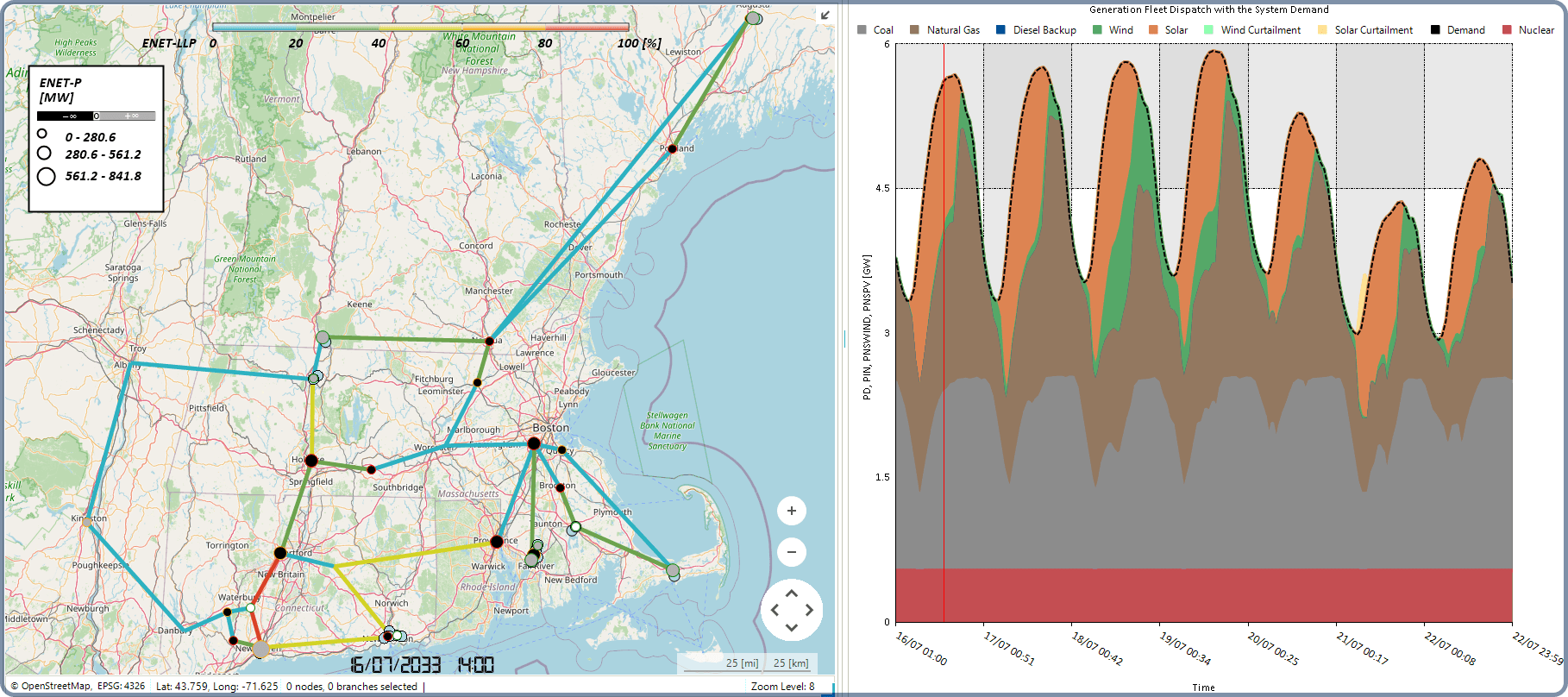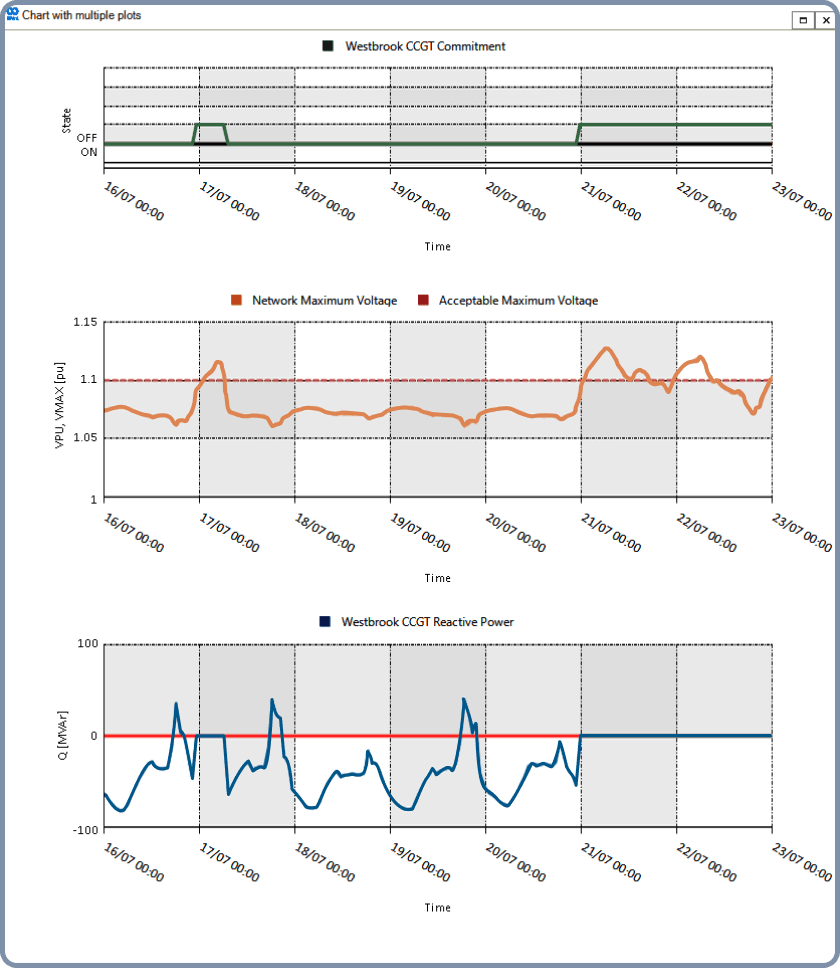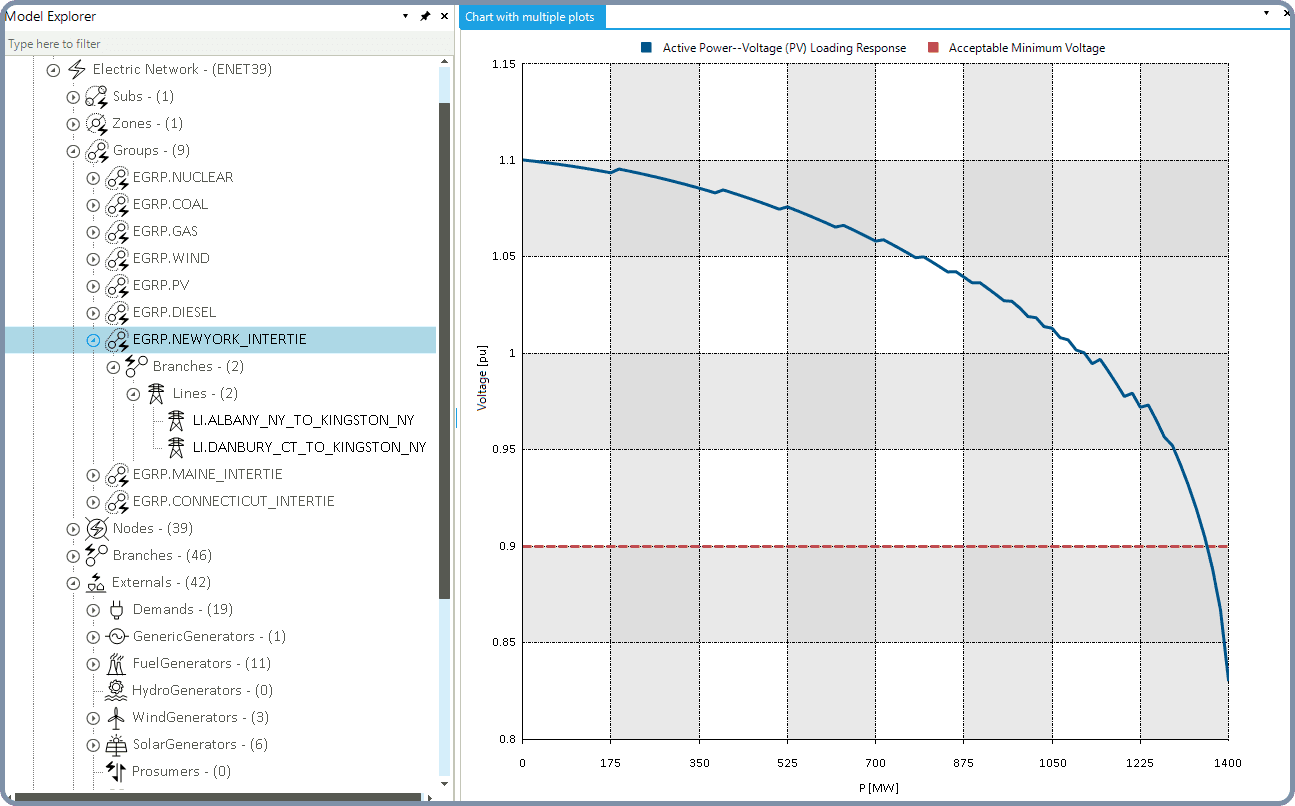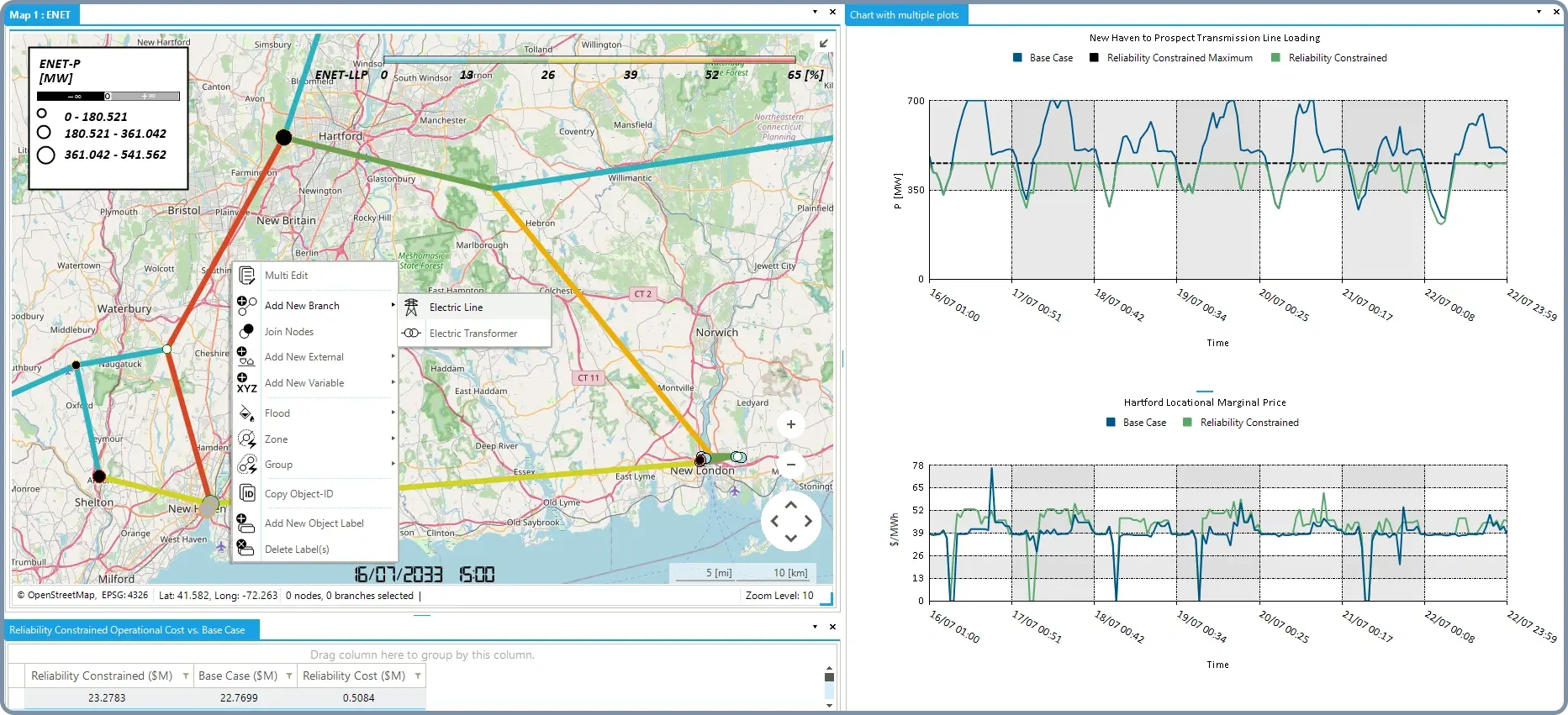The industry urgently needs new generation and transmission capacity—planning them together is critical. SAInt enables this.

Integrated Transmission and Generation Planning - In a Constrained World
Optimize planning across generation and transmission assets – all with a single software
The Challenge


Integrate Generation and Transmission Planning with SAInt
SAInt assesses reliability and economic solutions across the portfolio of generation and transmission assets identifying the most reliable, cost-effective mix of these resources.

Step 1: Generation Fleet Optimization
Optimize the dispatch of generation fleets for current and future operating conditions by running network-constrained unit commitment optimizations with ancillary services and highly flexible custom constraints.

Image: A weeklong dispatch shows large participation of variable Solar and Wind resources, and the complementary behavior of thermal assets.
Step 2: Reliability Conditioning of Operations - Transmission
Analyze reliability conditioning of generation asset operations by executing sequential ACPF conditioning analyses on the optimized sub-hourly dispatch to identify loading and voltage violations.

Image: A gas turbine has been decommitted during periods of light transmission loading, leading to problematic network over voltages.
Step 3: Contingency Assessments - Transmission
Assess contingency response and voltage constrained transfer capacity limits by executing comprehensive contingency analyses during automatically identified at-risk loading periods and calculate voltage and thermal driven capacity limits.

Image: Voltage stability analysis shows a particular intertie is not N-1 secure following the loss of reactive power support from a local generator.
Step 4: Cost-Comparative Optimization Informed by Reliability - Generation
Constrain generation asset optimizations based on reliability assessment for cost-comparative analysis by easily configuring and generating new dispatches considering constraints such as generator must-run requirements and thermal and voltage loading limits.

Image: A heavily loaded intertie is security constrained, yielding increased locational marginal prices. A transmission expansion solution can be easily assessed.
Step 5: Evaluate the Impact of Capital Investments
Rapidly assess system operational costs and reliability impacts of upgrade strategies.

Image: A transmission line is added to the model to examine its impacts on alleviating congestion in the system.

The Value of Integrated Generation and Transmission Planning with SAInt
True Least-Cost Planning Across Generation and Transmission
SAInt optimizes generation and transmission together to identify the most reliable, cost effective solutions.
Expose Hidden Reliability Constraints
SAInt links generation dispatch with AC power-flow and contingency checks to expose violations and turn them into enforceable constraints or targeted upgrades.
Discover New Stress Periods
SAInt enables planning against thousands of operational conditions, far beyond the handful traditionally planned for, revealing dispatches that were previously too complex or time-consuming to identify.

See what SAInt can do
Schedule a demo to learn how to streamline transmission-constrained generation planning into one seamless, efficient SAInt workflow.


See More
Watch a Customer Testimonial: HNEI’s Integrated generation, transmission, and distribution planning
"Production cost modeling alone isn’t enough. You also need to look at grid operations, infrastructure, power flow, and sometimes dynamics."
Read the full Q&A
See SAInt in action!
Watch how generation and transmission planners iterate between production cost optimizations and AC power flow simulations to plan for reliable operations.
See the importance of integrated generation and transmission planning in ESIG’s Integrated Planning Guidebook
"[Integrated Planning's] adoption is driven by the growing need to incorporate short-term operational detail into long-term system planning in an increasingly complex grid."
Read the report

